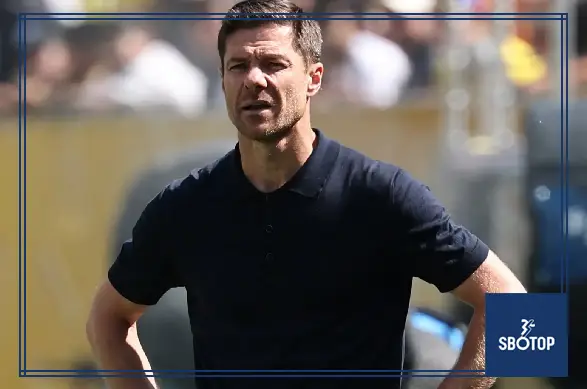When Xabi Alonso was officially unveiled as the new Real Madrid head coach earlier this summer, fans welcomed one of their favorite midfield maestros back to the Santiago Bernabéu with open arms. However, few expected his first high-profile test to be such a brutal reality check.
A humbling 4-1 preseason defeat at the hands of Paris Saint-Germain in Tokyo has prompted fresh questions about Real Madrid’s readiness to reclaim European supremacy. But Alonso, cool and composed even in the face of growing scrutiny, remained unfazed. Speaking candidly to reporters following the match, the former Spanish international reiterated a key message: “This is a two-year project.”
While some Madridistas may have been disheartened by the lopsided result, Alonso’s long-term vision suggests a deeper, more strategic rebuild is underway—one that prioritizes youth development, tactical reinvention, and a return to the club’s identity, even if the path is rocky at first.
The PSG Loss More Than Just a Scoreline
Real Madrid’s preseason fixture against PSG was intended as a friendly—but it turned into something far more revealing. With the French champions in midseason form and boasting an attack led by Kylian Mbappé and Ousmane Dembélé, Madrid’s new-look side struggled to keep pace.
Despite an early goal from Rodrygo, the Parisians overwhelmed Real Madrid’s backline, exposing gaps in communication and positional awareness—symptoms of a squad still adjusting to Alonso’s evolving system.
“There’s no hiding from the result,” Alonso admitted post-match. “But the purpose of these games is to learn. To be exposed, yes, but also to understand where we are and where we need to be.”
Indeed, Alonso was quick to draw attention away from the defeat and toward the bigger picture—one that spans beyond August, beyond this season, and possibly even beyond next summer’s transfer window.
A New Era Begins Xabi’s Vision for Real Madrid
When Alonso accepted the role following Carlo Ancelotti’s departure to manage Brazil, it wasn’t on the premise of instant results. He made it clear from day one that he saw the club’s transition as “a layered evolution, not a quick fix.”
Having just led Bayer Leverkusen to their best Bundesliga campaign in a generation, Alonso arrives with a growing reputation as a tactical innovator—one who values structured pressing, positional discipline, and fluid build-up play. At Madrid, however, he faces a challenge of a different magnitude: not just winning, but doing so while reshaping a team built for another era.
“We are not just managing a team,” Alonso said during his first press conference. “We are managing expectations. History. Legacy. The goal is to modernize while respecting what makes Real Madrid unique.”
Youth and Renewal The Core of the Project
Central to Alonso’s approach is the integration of young talent. With aging stars like Luka Modrić and Toni Kroos nearing the end of their careers, and veterans such as David Alaba and Dani Carvajal showing signs of physical decline, the need for generational turnover is clear.
Alonso has wasted no time promoting younger players. In preseason alone, players like Arda Güler, Nico Paz, and Vinícius Tobias have seen valuable minutes, often in high-leverage situations.
But the real shift may lie in how Alonso deploys Madrid’s existing young core. Jude Bellingham, Eduardo Camavinga, and Aurélien Tchouaméni are being encouraged to form a new midfield trident—one that could carry the club for the next decade.
“These players are not just the future—they are the present,” Alonso remarked. “But they must be given time to grow into the roles they will eventually dominate.”
This patient, long-term development model marks a significant shift from the club’s historically Galáctico-driven strategy.
Tactical Overhaul Moving Beyond the 4-3-3
Another key element of Alonso’s project is tactical reinvention. While Ancelotti’s Madrid relied heavily on a traditional 4-3-3 system with high-pressing wingers and overlapping full-backs, Alonso is experimenting with a more modern 3-2-2-3 structure, similar to the one he implemented at Leverkusen.
In this system, wingbacks such as Fran García and Ferland Mendy push high, while a back three provides width and composure. Bellingham is deployed as a roaming No. 10, while Camavinga and Tchouaméni anchor the midfield.
Against PSG, however, the system looked raw. Defensive rotations were slow, midfield transitions inconsistent, and spacing in the final third lacked precision. But Alonso views these growing pains as part of the journey.
“If you want evolution, you must accept mistakes,” he said. “This system gives us more control in the long run. But control takes time.”
Leadership Transition Who Fills the Void
One of the unspoken challenges Alonso faces is managing a leadership vacuum. With longtime captain Karim Benzema now at Al-Ittihad and Modrić playing reduced minutes, the dressing room is undergoing a generational shift in voice and tone.
So far, Nacho has inherited the armband, but Alonso is gradually encouraging younger figures like Bellingham and Vinícius Júnior to assume more vocal and symbolic roles.
“Leadership is not a badge—it’s behavior, it’s consistency,” said Alonso. “We’re building a culture where anyone can lead by example, regardless of age.”
That culture shift may be just as vital as any tactical tweak.
Transfer Market Patience No Panic Buys
One surprising aspect of Alonso’s early tenure has been his restraint in the transfer market. With the glaring need for a new striker following Benzema’s departure, many expected an aggressive push for a marquee No. 9.
Instead, Alonso has chosen to experiment with Joselu and a false nine rotation involving Bellingham, trusting in internal solutions while waiting for the right profile to become available.
Rumors continue to swirl about a future move for Erling Haaland or a renewed pursuit of Kylian Mbappé, but Alonso insists the club will not be rushed.
“You cannot build a house on unstable ground,” he said. “Before adding stars, we must build a strong spine.”
That spine, he believes, is nearly in place.
Managing Expectations in a City That Demands Trophies
Perhaps the most difficult part of Alonso’s project is managing the expectation of instant success in a city that lives and breathes trophies.
Even in years of transition, Real Madrid is expected to compete on all fronts. The club’s recent history includes five Champions League titles in ten years, a standard that leaves little room for patience.
Alonso, however, is steadfast in his messaging.
“I understand the pressure,” he acknowledged. “But if we want to create something truly enduring, we must be brave enough to take a long view.”
Club president Florentino Pérez has reportedly backed Alonso’s vision, even if short-term results fluctuate. Insiders suggest Alonso was given a minimum two-year runway to reshape the squad and build a new dynasty.
Also Read:










